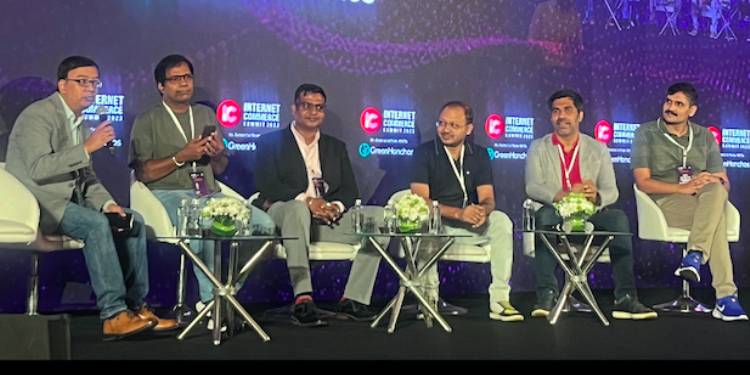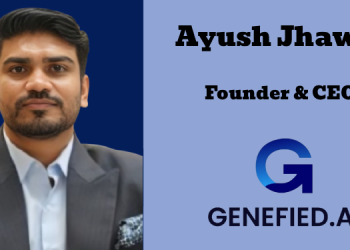When it comes to e-commerce, customer acquisition and customer experience rate highly for any company, for only when it scores high on these will it see higher volumes, repeat customers and growth.
At the Internet Commerce Summit 2023 held in Bangalore recently, executives delved into the strategies followed by brands for better consumer acquisitions and experiences. They were talking as part of a panel discussion on Marketing: Acquisition, Retention & Growth – The Game Changing D2C Marketing Hacks.
The panel was moderated by Director – Strategic Growth, Microsoft India, Subhajith Mazumder. Panellists included, CEO & MD, Somethings’ Brewing, Abhinav Mathur; Founder & MD, De Moza, Agnes Raja George; VP, Data Science, CleverTap, Jacob Joseph; CBO, FreshToHome Foods, Santhosh Kumar; and Sr Vice President, HomeLane, Subodh Jain.
Mathur opened the discussion talking about customer acquisitions. “Somethings’ Brewing is a D2C space for all things coffee. It is not different or niche, coffee is the second most traded commodity in the world after oil. Everyone has coffee in some form or the other. But most people have instant coffee and what we are trying to promote is home brewing – make coffee at home. Like any marketing activity, there is a funnel because it is a new habit in India. We find that there are too many customers who are well versed in technology and who know exactly what they want to buy. Hence, the bottom of the funnel is still very narrow.”
He underlined that while looking at customer acquisitions, the company seeks the omnichannel approach. “We are on social media and try to discover more and more people who are interested in coffee and visit cafés, and those set of people who have any kind of affinity towards doing things themselves. Because these are customers who are trying to discover new, interesting hobbies and habits. So, that becomes the primary source of acquisition for us,” he said.
Physical acquisition is an important channel for Somethings’ Brewing, Mathur added. “If you are visiting food festivals, you will find us there. We collaborate with several coffee chains to set home brewing sessions. We have a retail store in Bangalore, where we encourage people to come in. A unique proposition in our store is, it is a café but if you make coffee on your own, coffee is on the house – it is free. These are some of the interesting non-online acquisition strategies we follow.”
FreshToHome Foods’ Kumar said, “Customers are looking for value. We offer coupons and discounts, and we see customers acting on it, but at the same time, not all customers are excited about cash discounts and coupons etc. It depends on the target audience and segments you are talking to. We have offline stores as well, hence there is a lot of scope in microtargeting. The acquisition cost is much cheaper there.”
Profitability is an extremely hard thing to achieve, said Kumar. “There are two things we can do – one is the defence strategy, which is lowering your costs, the other one is the offensive strategy. What are the next bets you can do without burning the bank, which has been done by many brands, including us, in the last two-three years. We put money behind growth, and we realised that it is not the right strategy specially given these kinds of market circumstances. You do what is best for the offence, which is basically the market share game. At FreshToHome, we are going for the second level of growth through offline channels. Right now, offline channel revenue will be insignificant, perhaps 6-7 pc, but going forward that will increase.”
On what has changed over the couple of years that allows brands to make sharper decisions, Joseph said, “First of all, the trend towards first party data has increased a lot and the gap between Customer relationship management systems (CRMs) and customer data platforms (CDPs) is reducing. People are expecting platforms like us to be a CDP, and many brands are using us as CDP as well. At CleverTap, we are able to create a profile and store data up to 10 years. What differentiates a brand is the customer experience they are offering; how do you provide that customer experience across various channels of communication on both online and offline. For example: If I plan to buy a mobile, maybe I look at a website or an app, if I want to touch and feel that I go to the store.
“Already there are campaigns running on online channels and I buy at the physical store and still I get messages and campaigns because it was created only for the online channels and if the brands are not collecting unifying data across platforms, then the customer experience is not good.”
Speaking on how De Moza is growing the D2C operations, as against retail and traditional channels, George said, “At De Moza, we have 45 stores and 600 PoS across the country. Most of them are organised businesses. Hence, we get secondary sales data from every single city. We have a presence in 300 cities across all the states.” The brand has data points on what products sell at what period of time, and which market helps them to leverage the D2C penetration, he added.
Explaining with an example, he said, “The biggest festive season in Andhra Pradesh is Pongal. We drive the entire campaign for that particular month, instead of spending marketing monies in the entire country. That in one way helped us in D2C penetration. It also helps us to reduce the return of products purchased. The return rate in the fashion category is around 30-35 pc, ours is below 20 pc. Even with the least marketing, our e-commerce channel is profitable. I believe product returns is the biggest killer of the fashion industry.”
Jain spoke on how HomeLane is driving the growth chapter, “Home interiors are mostly a one-time purchase. The industry is very large and is marked around $18 billion – in top 30 cities in India. Now, 10 pc of it is very high-end interiors served by specialised architects and interior designers. Around 5 pc is brands like us who are the digital first players. The remaining 85 pc is still fragmented by local people.”
For Jain, the definition of growth is moving people from the unorganised sector to the organised one. “Here, in unorganised, the challenge is an unpredictable experience; people start with some assumption that they will finish the interiors with Rs 5 lakhs but they end up spending Rs 8 lakhs. They think the work will be finished in 3 months, but it will take 6 months. The quality is something they don’t understand as they consume the category once or twice in a lifetime. There is an information disparity. For us to grow, one thing which we do is do brand led category campaigns.”
He underlined that onboarding cricketer MS Dhoni as brand ambassador has helped in building credibility and trust. “It is important that we are available for people. It is easy to open pin codes, but for us it is work being done at the customer’s house. Around hundreds of parts get shifted to the customers house and then work is done there. Enabling more and more cities and pin codes is something very critical for our growth.”

















